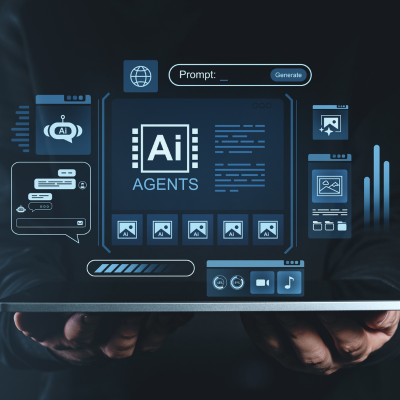Introduction: The Battle for Attention in 2025
In today’s digital landscape, attention marketing is no longer a luxury—it’s the foundation of business growth. Consumers navigate thousands of messages daily across platforms, devices, and screens. Their attention is fragmented, their patience thin, and their expectations high. The brands that win aren’t those shouting the loudest; they’re the ones showing up intentionally, with the right message at the right moment.
Attention marketing has evolved from a peripheral tactic into a core business discipline. It’s about understanding the psychology of focus, leveraging data to predict behavior, and creating experiences that feel personal rather than intrusive. In 2025, mastering consumer attention strategy isn’t optional—it’s essential for survival in an increasingly competitive attention economy.
This article explores how modern brands capture and retain consumer focus, the science behind digital engagement, and practical tactics for creating campaigns that cut through noise. We’ll also examine how professionals can develop the expertise needed to lead in this space.
The Attention Economy: Understanding the Shift
The attention economy operates on a simple principle: attention is scarce, and value flows to those who capture it most effectively. But here’s what’s changed: the old omnichannel playbook—post everywhere, optimize for reach, hope for conversions—no longer works.
Research shows that even a modest 5% increase in attention can drive a 40% boost in ad awareness. More importantly, specific attention thresholds matter: brands need at least 9 seconds of engagement to influence brand consideration and 8 seconds to impact purchase intent. This means every second counts, and every placement must earn its place in the consumer’s mental real estate.
The shift from mass marketing to precision-based consumer attention strategy reflects a fundamental truth: your customers are everywhere, but their attention isn’t. Success requires understanding not just who they are, but why they’re on each platform, what emotional need they’re fulfilling, and how to design content that fits the context.
Core Principles of Modern Attention Marketing
Intentionality Over Omnipresence
The days of spray-and-pray marketing are over. Brands must be deliberate about where they show up and why. This means mapping audience behavior across platforms, understanding the “job to be done” on each channel (whether that’s education, connection, or entertainment), and tailoring content accordingly. A single graphic resized for five platforms won’t cut it; each touchpoint requires contextually relevant content.
Behavioral Segmentation Over Demographics
Traditional demographic targeting—age, location, income—provides surface-level insights. Modern consumer attention strategy digs deeper into behavioral data: purchase history, content preferences, engagement patterns, and emotional intent. Brands that segment audiences by actual behavior rather than broad categories see dramatically higher engagement and conversion rates.
Owned Media as the Foundation
Social platforms are rented land. In 2025, successful brands are building owned media channels—email lists, SMS communities, and branded platforms—where they control the relationship. These channels deliver higher engagement, better signal quality for optimization, and immunity to algorithm changes. Email and SMS should be viewed as primary channels, not afterthoughts.
Technologies Driving Attention Marketing in 2025
AI-Powered Personalization and Contextual Relevance
Artificial intelligence has moved beyond simple recommendation engines. Modern AI analyzes vast datasets to understand not just what consumers buy, but why they buy it. Contextual AI examines text, visuals, video content, and behavioral signals holistically, creating richer audience profiles and enabling truly personalized experiences. The result: messages that feel like they were created specifically for each individual.
Real-Time Attention Analytics
Brands now measure attention quality, not just reach. Tools track time spent on page, scroll depth, video completion rates, and interaction patterns. This data reveals which content actually captures focus versus what merely gets served. Real-time analytics allow marketers to adjust campaigns mid-flight, optimizing for attention rather than guessing what might work.
Interactive and Immersive Formats
Static content is easily ignored. Interactive elements—polls, quizzes, shoppable videos, and dynamic infographics—create friction that stops scrolling. These formats demand participation, which deepens engagement and strengthens memory. Augmented reality filters and branded interactive experiences add another layer, particularly effective for reaching younger audiences.
Native Advertising and Contextual Placement
Native advertising blends seamlessly into editorial environments, reducing the jarring feeling of traditional advertising. Research demonstrates that longer engagement durations with native formats consistently improve metrics across the marketing funnel. The key is placing ads on high-attention platforms and in formats that deliver prolonged, meaningful exposure.
Practical Tactics for Capturing Attention
Lead with a Hook
The first second is everything. Whether it’s a video, email subject line, or social post, the opening must compel immediate attention. This means leading with benefit, curiosity, or emotional resonance—not with your brand name or generic messaging.
Embrace Snackable Content
Short-form video dominates in 2025. TikTok, Instagram Reels, and YouTube Shorts are where audiences discover brands. But “snackable” doesn’t mean shallow. Bite-sized content—quick tutorials, behind-the-scenes clips, customer stories—works because it respects viewer time while delivering value. Repurposing longer content into series of 15-30 second videos extends reach and captures fragmented attention spans.
Humanize Over Automate
AI and automation are everywhere, which paradoxically makes human connection more valuable. Authentic stories, team introductions, and customer testimonials outperform polished product ads. People engage with people, not faceless corporations. This is where user-generated content and influencer partnerships shine—they provide social proof and authentic voices.
Optimize for Scanners, Not Readers
Most digital content is scanned, not read. Use clear headlines, short paragraphs, bullet points, and visual breaks. Organize information with topic clusters and pillar pages to guide users through related content. This structure strengthens SEO while respecting how people actually consume digital information.
Build Community and Conversation
Consistent engagement, contests, and interactive experiences turn customers into advocates. Social listening tools reveal what audiences care about, allowing brands to participate in conversations rather than interrupt them. Community-driven strategies generate higher lifetime value and organic word-of-mouth.
Measuring What Matters
Attention Metrics That Drive Business Results
Traditional metrics like impressions and clicks miss the full picture. Modern brands track attention quality: time spent, scroll depth, video completion rates, and interaction frequency. These signals predict actual business outcomes better than vanity metrics. Combine attention data with conversion tracking to understand which content types and placements deliver the highest-value engagement.
Campaign Automation for Strategic Focus
AI-driven automation handles repetitive tasks—email sequences, ad bidding, audience targeting, dynamic content personalization—freeing teams to focus on strategy and creativity. Welcome sequences introduce new subscribers to brand value, lead nurturing emails guide prospects through the funnel, and cart abandonment campaigns recover lost revenue. Automation increases consistency while reducing manual workload.
Building Expertise in Attention Marketing
The skills required to excel in attention marketing go beyond traditional marketing knowledge. Professionals need to understand data analytics, AI capabilities, consumer psychology, platform algorithms, and creative storytelling. They must balance art and science, intuition and data. This is why specialized education matters. Programs that combine AI-led modules with hands-on learning prepare marketers for real-world challenges. Internships with industry partners provide practical experience with live campaigns, real budgets, and measurable outcomes. Faculty with extensive industry experience offer mentorship that textbooks can’t provide.
Frequently Asked Questions
What is consumer attention strategy?
Consumer attention strategy involves using behavioral data and psychological principles to capture and retain audience focus. It combines audience segmentation, contextual relevance, and engagement optimization to create campaigns that feel personal and valuable rather than intrusive.
Why is the attention economy important for brands?
Consumers have limited attention. Brands that win attention are more likely to achieve awareness, consideration, and purchase intent. In a crowded market, attention is the scarce resource that determines competitive advantage.
How does digital engagement impact marketing success?
Digital engagement increases audience retention, boosts conversion rates, and builds brand loyalty. Engaged audiences are more likely to become repeat customers and advocates. Quality engagement also generates better data signals for optimization.
What role does marketing psychology play in attention marketing?
Understanding how consumers think and feel drives more effective messaging. Psychology reveals what triggers attention, what builds trust, and what motivates action. This knowledge transforms marketing from guesswork into a predictable science.
How can marketers create high-impact campaigns?
High-impact campaigns combine behavioral segmentation, contextually relevant content, interactive formats, and real-time optimization. They respect audience time and intelligence while delivering clear value. Measurement and iteration are continuous.
What skills are most important for attention marketing professionals?
Critical skills include data analytics, AI literacy, consumer psychology, platform expertise, creative storytelling, and strategic thinking. The best marketers blend technical knowledge with creative intuition.
Conclusion
Attention marketing in 2025 isn’t about being everywhere—it’s about being worth paying attention to. It requires intentionality, behavioral insight, and the right technology stack. Brands that master consumer attention strategy will capture disproportionate share of mind and wallet. Developing expertise in this space requires education that goes beyond theory. Hands-on learning with real campaigns, mentorship from industry practitioners, and practical experience with cutting-edge tools prepare professionals to lead in the attention economy. The future belongs to marketers who understand that attention is earned, not bought. Those who master this principle will thrive.










